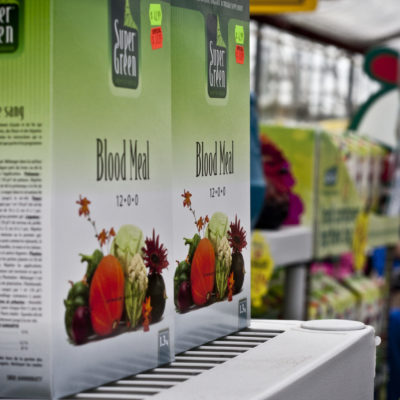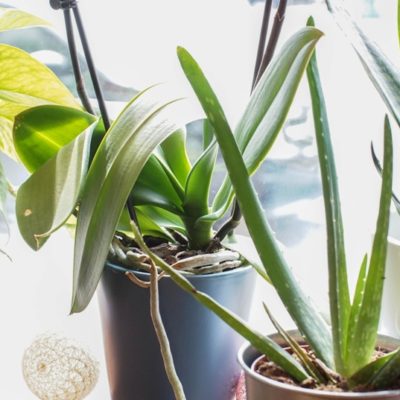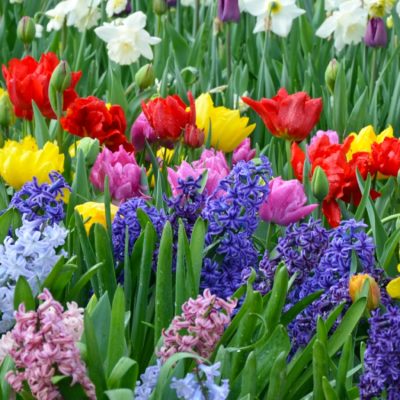
Growing Perennials in Pots & Planters
It’s no secret that there are lots of benefits to container gardening. Growing perennials in pots & planters is a new idea to some gardeners, but it is a great way to change up your containers and add some new ideas. And with the right care, perennials in containers can be overwintered and grown again the following year! Here are a couple of things that you should always keep in mind when planning potential perennial planters:
Choosing a Container
Just about anything that holds soil can be used as a planter, if you consider a few key factors. Firstly, make sure that your pot has a drainage hole in the bottom. Without drainage, it’s easy for water to build up in the bottom of the pot and rot the roots. When it comes to planting perennials in pots, the ‘bigger is better’ rule is a good one to follow. Perennials tend to have larger root systems than annuals, especially as they mature through several seasons. Also, if you wish to overwinter your perennials in their containers rather than transplanting them into the garden in the fall, it is extremely important to choose a pot that can stand up to the harsh freeze/thaw cycles that are the norm for Southern Ontario winters. Keeping soil in a container that cannot withstand the harsh temperatures will result in cracking and/or breaking.
Plant Selection
When choosing perennials to plant in pots, there are the normal cultural factors to consider. Plants that have similar light, water and soil requirements will group together well, whereas those with different needs should be planted in separate pots. Also keep in mind your container’s intended location for guidelines as to whether you should plant sunny or shady perennials. Some people create mixed combinations of several plants to ensure an attractive display of colour and foliage all season long, and others prefer the impact of a single, large specimen plant. It’s important to choose plants based on their foliage as much as their flowers, since perennials have a much shorter bloom period than annuals, and shade-loving perennials flower for shorter periods of time than sunny perennials. Compact, mounding or clumping plants typically grow better in pots than spreading perennials, which can outgrow their pot quickly. Because the root ball of the perennial is constrained by the size of the pot, some perennials may not reach their full mature size as they would in the garden.
Watering
Perennials in pots will generally need to be watered more frequently than those in the garden, and may need water as often as once a day during hot periods in the summer. Water deeply until it starts to drain out of the bottom of the pot, and use a water-soluble fertilizer about once a month during the growing season to keep your perennials well fed.
Why do container perennials require special treatment to overwinter successfully?
• Temperature fluctuations are greater above ground than below – perennials do not like this.
• Perennials are less cold-hardy when grown in containers, so there is a greater chance for injury.
• Keep in mind that the bigger the pot, the higher success rate you will have in overwintering. This is because there a bigger pot means a larger volume of soil to help insulate the roots, which helps to protect them from freezing.
Because of these facts, it is best to choose perennials that are at least 1 zone hardier to overwinter in pots: For our area, this means perennials that are hardy to at least zone 4 are your best chance for success!
Overwintering Perennials in Pots
Before the ground freezes, be sure to water your potted perennials deeply. This gives them a reserved water supply for any warm and thaw periods. Some people will also pile a few handfuls of snow on top of their container perennials – if the weather suddenly warms up, the snow will melt and water the plant. However, it’s also important that the plant doesn’t get too much water during the winter; if the top of the soil is soggy before the bottom is thawed enough to drain, the roots may begin to rot.
There are lots of different methods for overwintering perennials, each with its own benefits and drawbacks. Trial and error is the best way to find out which one works for you!
• The best method to overwinter perennials is to sink your pots right into the garden. This protects the roots just as if they were planted in the ground.
• You can overwinter potted perennials by placing them in an unheated garage or shed – this can protect the plant from extreme fluctuations. Check on the pot occasionally to make sure it doesn’t dry out, and don’t keep them somewhere that is heated – all perennials need a period of dormancy.
• If you want to overwinter your pots outside, group them close together. Keep the groupings somewhere on the ground rather than on concrete or anything raised like a deck, which would allow cold air on all sides of the pot including underneath, significantly decreasing the chances of successfully overwintering.
• If overwintering your pots outside, cover them with an insulating material. There are many options, from leaves and evergreen boughs to bubble wrap or an insulating blanket.





